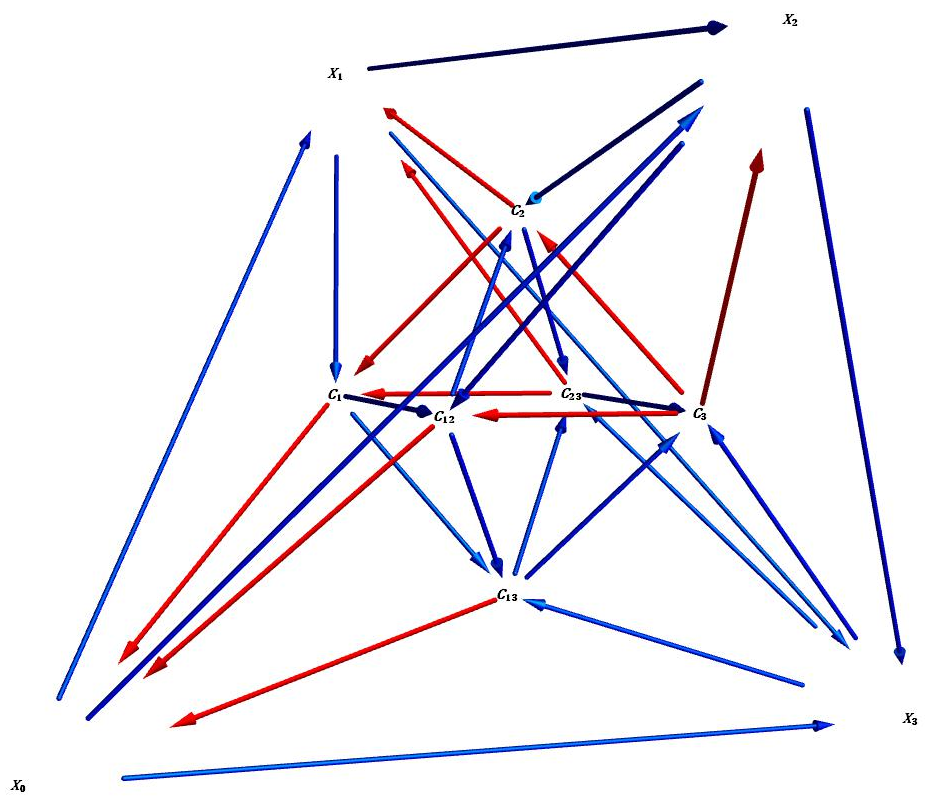The recent question Complete the following sequence: point, triangle, octahedron, . . . in a dg-category reminded me of something I wanted to clarify long time ago; most likely this is now well known but unfortunately I did not follow literature in the field attentively enough.
As pointed out in one of the answers to that question (by Piotr Achinger), it is all about Exercise IV.2 1(c) (p. 260) in Gelfand & Manin's "Methods of Homological Algebra".
Shortly, any composable $n$-tuple of morphisms in a triangulated category $\mathscr T$ gives a bunch of distinguished triangles which can be organized into a $\it hypersimplex$ - polytope modelled by the convex hull of edge midpoints of a (regular) $(n+1)$-simplex $\Delta^{n+1}$.
Now it seems that one may use this to define certain simplicial set out of $\mathscr T$. For that, we view each such hypersimplex as some sort of a map of $\Delta^{n+1}$ to $\mathscr T$: we map all vertices to some new entity $*$, edges to objects of $\mathscr T$ corresponding to vertices of this hypersimplex, etc. Then the standard cosimplicial space structure on $\Delta^*$ gives a simplicial structure on the collection of all hypersimplices as follows:
There is a unique 0-simplex $*$;
1-simplices are objects of $\mathscr T$, degeneracy of $*$ being the zero object;
2-simplices are distinguished triangles, and faces of ${\bf T}=(A\to B\to C\to\Sigma A)$ are
$d_0({\bf T})=A$, $d_1({\bf T})=B$, $d_2({\bf T})=C$;
moreover degeneracies of an object $X$ are
$s_0(X)=(X=X\to0\to\Sigma X)$ and $s_1(X)=(0\to X=X\to\Sigma0)$.
3-simplices are octahedra, faces being those four faces of the octahedron which are distinguished triangles.
I've posted an image of a 4-simplex to the page of the above question. This is something Wikipedia calls rectified 5-cell, it's like this:
Its faces are the five octahedra that can be seen in the picture - four ones adjacent (from inside) to the facets of the outer tetrahedron and the central one.
I guess everybody reading about triangulated categories for the first time and having seen simplicial identities before (or vice versa) comes up with this immediately; the point here is just that because of the above description of hypersimplices it is more or less clear that one indeed obtains a simplicial set (well, when $\mathscr T$ is small at any rate).
My questions are:
Does this simplicial set give a model for the $K$-theory of $\mathscr T$? Seems like its fundamental group is $K_0(\mathscr T)$...
Is this a Kan complex? Triangle axioms and the octahedron axiom seem to translate into something about the Kan conditions, does this extend up?
There seems to be more structure produced by the shift functor; is this actually a cyclic set? Can this structure be extended to a $\Gamma$-space, or turned into an E$_\infty$-space using any other machinery?
Is all this done accurately somewhere?

